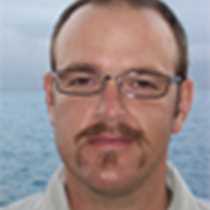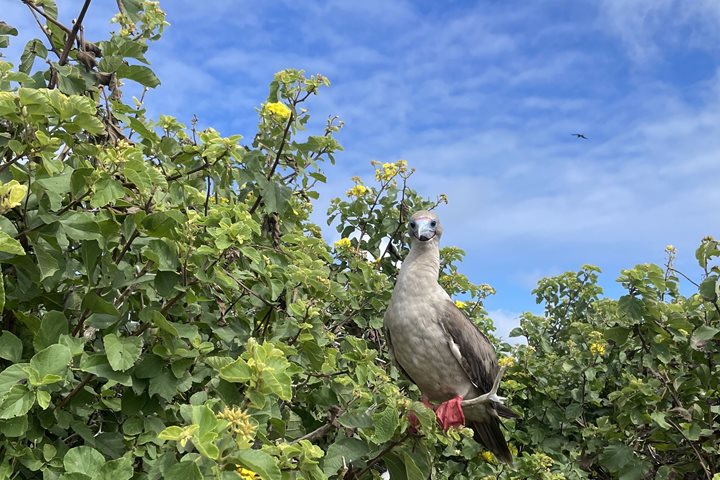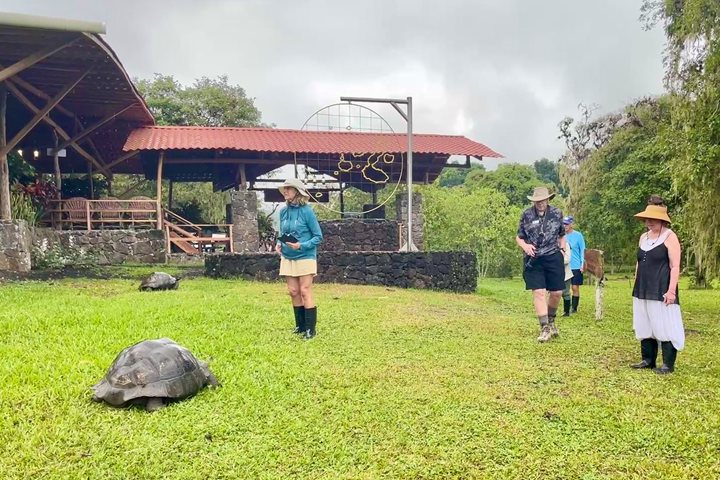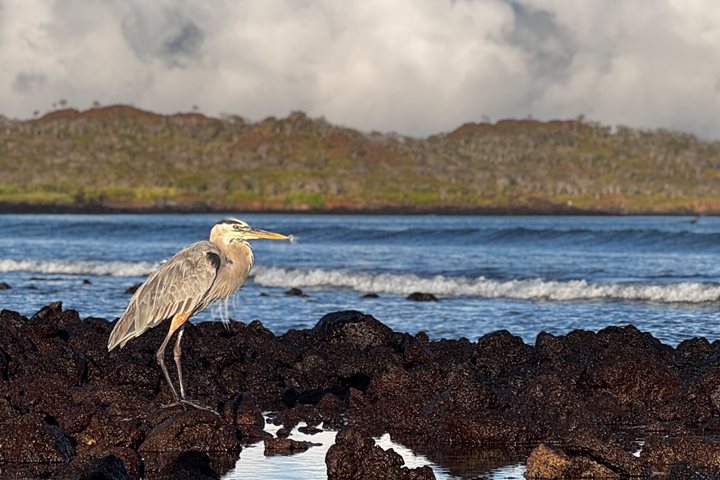Our first complete day of exploration leaves us with a sense of awe at Española Island. One of our older islands, it appears to be arid and devoid of life at a distance, however, this is far from the truth. The surrounding ocean is highly productive this time of year, allowing for an abundance of life on the island. Galapagos sea lions swim among us as we snorkel along the coast in the morning. On the fine white sand Gardner Bay beach, we have young Galapagos hawks soaring overhead with Española mockingbird’s fliting between us. We leave the turquoise waters behind as we navigate into the afternoon and Punta Suarez. A late afternoon walk allows us to encounter Nazca boobies, red-billed tropicbirds, marine iguanas, sea lions, blue-footed boobies, and the majestic waved albatross. The late glow of the sunset falls upon an albatross feeding its young, with the avian species returning to their nesting areas, a wonderful end to this day.
5/29/2025
Read
National Geographic Gemini
Genovesa Island
Genovesa is considered one of the Galapagos crown jewels, and today it was showing off all of its splendor. Immediately after breakfast we put on our sturdy shoes and set out to explore Prince Philip’s Steps. This area is known for opportunities to observe not only large colonies of nesting Nazca and red-footed boobies, but maybe, just maybe, the short-eared owl which exhibits diurnal behavior on this island. After this walk we got ready for a dip in the Pacific Ocean and snorkeling along the inner coast of this caldera. The afternoon was equally amazing as we disembarked to explore Darwin Bay, along a short and easy trail that was packed with wildlife. Here we observed not only nesting frigatebirds, red-footed boobies, and Nazca boobies, but also a few yellow-crowned night herons. It was another incredible afternoon in the Galapagos Islands.







